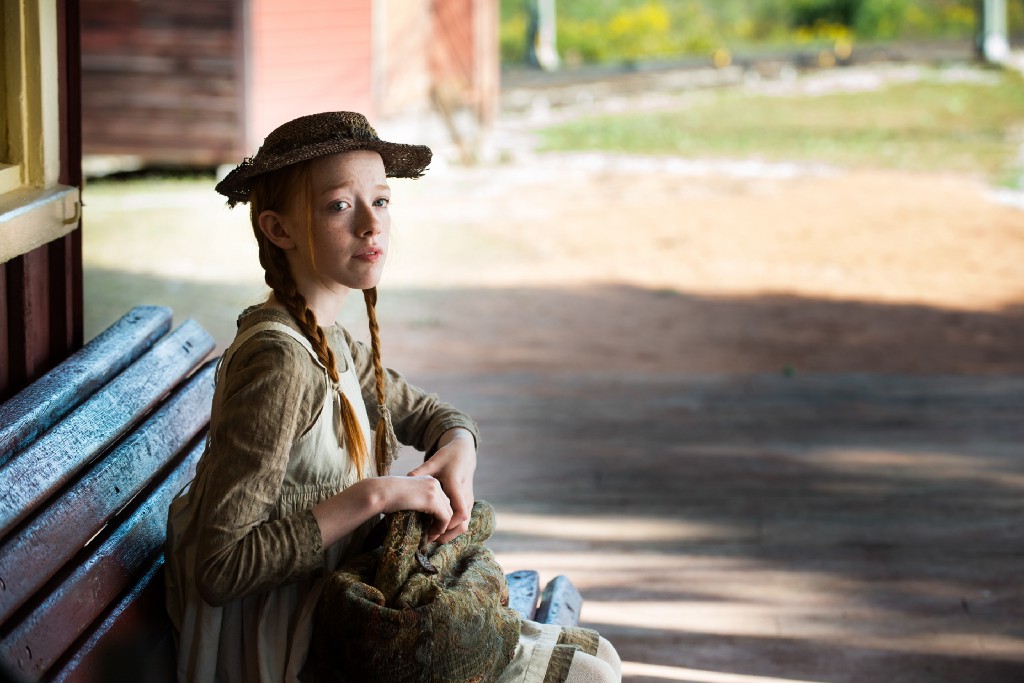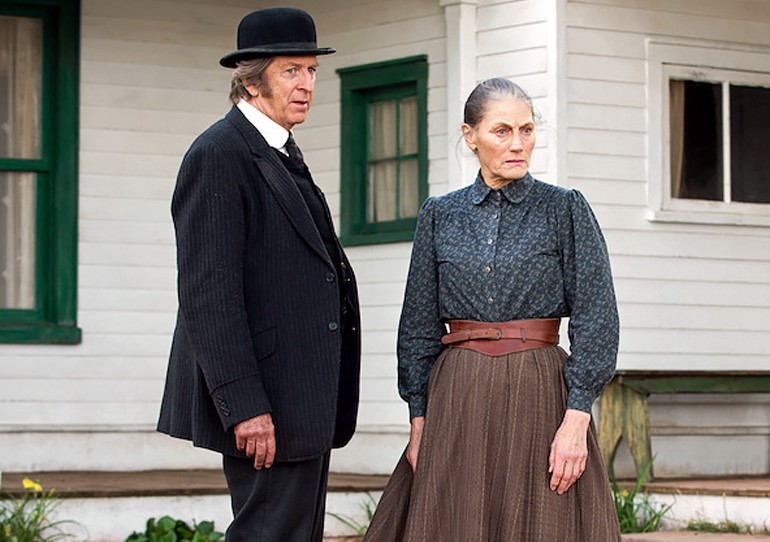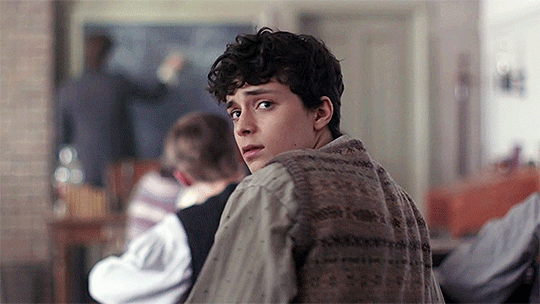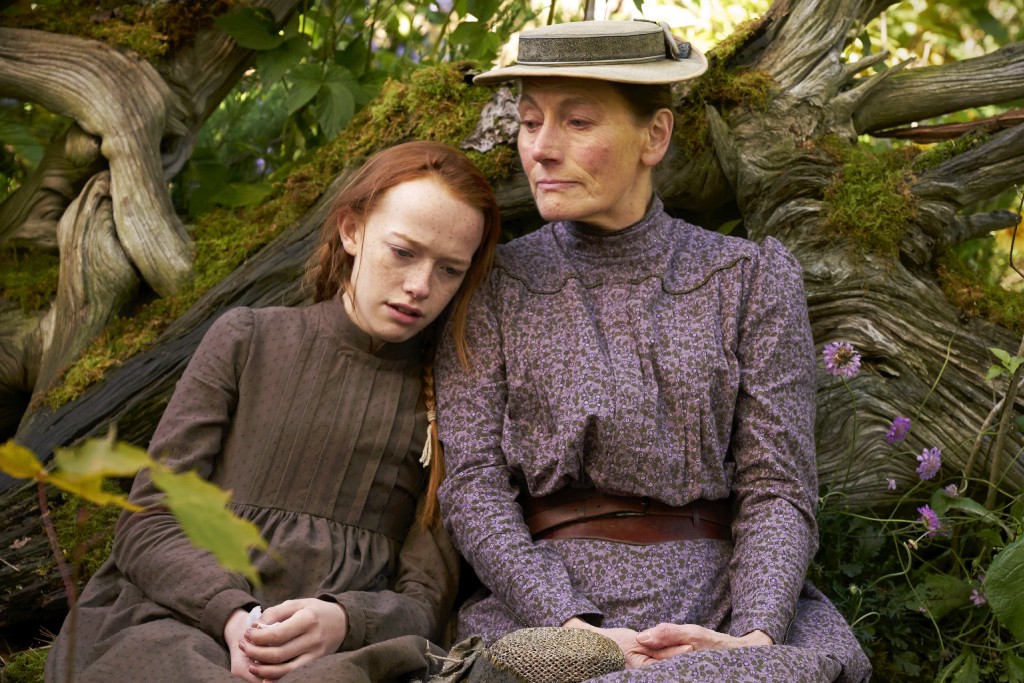Books & Culture
‘Anne of Green Gables’ Returns, Darker and More Defiant
In the new Netflix/CBC series ‘Anne with an E,’ a dreamy Anne Shirley faces reality

Electric Lit is just $4,000 away from our year-end fundraising goal of $35,000! We need to hit this target to get us through the rest of 2025, and balance the budget for 2026. Please give today! DONATE NOW.
It was a twenty-dollar gift card to the tiny Waldenbooks in our South Central PA suburban mall that led me to my kindred spirit. I remember strolling by the shelves in the children’s section, running my fingers across the spines of the chapter books, trying to decide what to spend my riches on. My eyes paused on a box set containing the first three volumes of L.M. Montgomery’s beloved Anne of Green Gables series, pastel-hued and tightly pressed together in their light pink cardboard case. All I knew was that it was a classic series, and as a voracious ten-year-old reader I felt compelled by them, not for their iconic reputation so much as for the promisingly scrappy red-headed girl grinning back from the cover.
I quickly became obsessed. My younger sister Colleen also caught the fever. Together we read the entire series, deviated into Montgomery’s other books, and happily sank hours into the CBC’s mid-eighties adapted television miniseries. I hand drew and colored maps depicting the locations from Anne’s imagination, including the White Way of Delight, Lake of Shining Waters, Dryad’s Bubble, Lover’s Lane, Violet Vale, and Haunted Wood. I took money saved up from doing chores to Toys “R” Us and bought the collectible Anne doll. It sat exquisitely thereafter on my four-poster bed, clutching her small carpet bag in which I’d hidden tiny treasures of my own, including coins and a quilt piece I’d made in Girl Scouts. Colleen and I daydreamed about frolicking across the fields of Prince Edward Island in Canada, where the books and the show were set, a trip we still plan to make one day. My fixation at the time was probably aided by the fact that I myself was a freckled and somewhat gawky red-headed girl who loved to read, who could hold her own in a neighborhood scuffle and was quick to temper. Anne seemed like my kindred spirit. My bosom friend.
Everyone has their own favored version of Anne (with an “e”), whether it’s the one they conjured up while reading the books as a child, or Megan Follows, with her frizzy hair and button nose, or the almost forgotten black and white film portrayals from 1934 or 1940, by an actress who ultimately adopted Anne Shirley as her permanent stage name. The recent Netflix/CBC miniseries has added another new Anne to the legendary lineup, and for a character known for her rebelliousness, this Anne (played by Amybeth McNulty) shakes things up.

I binge-watched the new series (appropriately titled Anne with an E) in a handful of days. Throughout the seven episodes I laughed, cried, remembered my first Anne, but embraced this new one too. This new telling of Anne’s life is depicted with alternately colorful and shadowy cinematography. The landscape remains epically gorgeous, but there is a moodiness to the woods and farms, to the clapboard houses and the sea.
There is also immense joy and heart, and the same giddiness and complicated coming of age that there have always been. The new Marilla (Geraldine James) and Matthew Cuthbert (R.H. Thomson) captured my heart from the first moment they reluctantly took Anne in. Marilla, with her stern jaw and sweetly earned smile, Matthew with his quiet shyness, and slow but eager manner. I admit that I preferred the earlier CBC version of Diana over the present one (Dalila Bela). But the new Gilbert, played by Lucas Jade Zumann, is kind-eyed, adorable, and witty — fully worthy of a crush.


The largest departure is that our new Anne comes with baggage, and not in the sense of her shabby old carpetbag. She is haunted by a past replete with abuse, loneliness, fear, and cruelty. These are matters and situations only hinted at in Montgomery’s sentences, which in rereading them as an adult become apparent between the lines, as if it were Montgomery’s intention all along to suggest how hard Anne had it before she arrived at Green Gables:
“Were those women — Mrs. Thomas and Mrs. Hammond — good to you?” asked Marilla, looking at Anne out of the corner of her eye.
“O-o-o-h,” faltered Anne. Her sensitive little face suddenly flushed scarlet and embarrassment sat on her brow. “Oh, they meant to be — I know they meant to be just as good and kind as possible. And when people mean to be good to you, you don’t mind very much when they’re not quite — always. They had a good deal to worry them, you know. It’s very trying to have a drunken husband, you see; and it must be very trying to have twins three times in succession, don’t you think? But I feel sure they meant to be good to me.”
The effect is to strip away the excess of happy innocence and fluff present in the older adaptations, to make you stare into the eyes of a young girl desperate for acceptance, a new life, and a loving home. Amybeth McNulty brings a sharper edge to this Anne, and an inelegant anxiety to her imaginative spirit that seems born out of need. Although McNulty isn’t as polished or refined as Megan Follows––her voice often screeching at an eye-twitching pitch––isn’t that true of most preteen girls? I would compare it to the sound of my household in 1996, where three sisters between the ages of nine and twelve shared a single bathroom. In that sense, this Anne feels genuine to the part.

The darkness of Anne’s past is imparted through gray-toned flashbacks — visions of her being whipped by a drunken former ward, tasked with watching babies inside a grimy house, teased by cruel orphanage girls who dangle a dead mouse over her face. None of it is easy to watch. Even more difficult is seeing her reel from the memories, all the while struggling to be brave, striving to look forward and to forget.
These flashbacks provide a more layered explanation for Anne’s clumsiness and haphazardness — the times she drops things, burns pies, breaks dishes, forgets chores, gets lost in thought. The suggestion is that she’s not merely daydreaming or wandering, but might actually be suffering from PTSD. There’s a more piercing desperation behind her desire to remain at Green Gables, and when Marilla threatens to send her back to the orphanage, Anne understandably crumbles. The update made me reflect to a greater extent on her character, and how this was not just the lovely childhood romp I’d been holding onto for twenty years. There was a darkness in her, preceding the light that would, under Marilla and Matthew’s care, gradually find root and grow.
I reread the book while watching the new show, entering into an “all Anne, all the time” bubble. While reading I realized how lost Anne’s dire situation had been on innocent, ten-year-old me. I’d never fully understood the severity of her past, couldn’t have comprehended how dark that experience must have been. Lucky me. For those readers who could understand it, or who at least felt close to it, I imagine they must have found comfort in Anne in ways that I never needed to.
As we watch the reimagined Anne making Green Gables her home, there comes a string of obstacles familiar from previous renditions, as well as some new ones which only add to the series’ rawness. The young girls at school innocently talk of sex, and Anne — unaware of doing anything wrong — contributes to the discussion, repeating what she’s heard in her prior abusive homes, including the phrase “pet the mouse.” She gets reprimanded for being vulgar, the other students call her “garbage girl,” and she becomes the favorite subject of town gossip.
But the obstacle that truly breathes new life into the story is when Anne wakes in the middle of the night and thinks she’s bleeding to death, only to have Marilla explain what her period is. I cheered during this episode. There was something thrilling about watching my former kindred spirit become even more tangible, as she faces the reality of being a woman. It was endearing, too, to watch Marilla explain to Anne how to cope during those times of the month (drink that raspberry cordial, Anne!). Although Montgomery never discussed Anne’s period in the books, and Megan Follows never bled on the sheets, Anne Shirley would indeed have had to deal with menstruation.

I admit that I am typically a purist. For me a book is usually better than the film, and the first film is almost always superior to the second. Despite myself, I embraced this new series. I compared, reread, and retraced my memories with my sister, all the while falling in love with the new rendition. At its core the story is the same, but the approach to telling it is, not only different, but braver. There will be (and already have been) those who feel the new version is too modern or edgy, taking away from the mood of lighthearted innocence and wonder that marked the earlier entries. But this new Anne is truly a survivor. I felt more sympathy and pride — and emotional investment — watching her push forward, as well as greater meaning in the fact that, despite her hardships, she can find something to praise in the life around her. She brings a depth and an overcoming courage to the beloved heroine that hasn’t been portrayed before, without stripping away the hopefulness that defines her character. For me, it was like uncovering a dark truth about a dear friend, only to have it deepen my understanding and appreciation of them even more.
This new Anne is still the girl who says “Dear old world … you are very lovely, and I am glad to be alive in you.” It’s only more poignant now as she reminds us to be grateful, to turn towards some kind of light, even in the darkness. We could all take a page from “Anne with an ‘e’.”
Beyond Voiceover: ‘Big Little Lies’ & Female Interiority on TV









